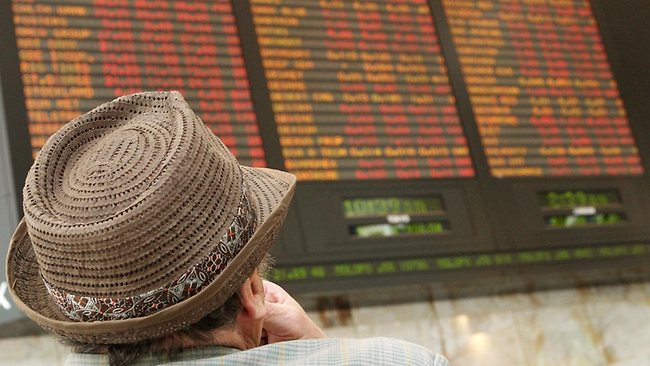Market watchers predict the local sharemarket will forge further ahead this year after surging almost 15 per cent last year, the result of a second-half recovery that defied concerns about sovereign debt in Europe and the US and a Chinese slowdown.

While the bourse chalked up its best year since 2009 -- more than expunging a 14 per cent decline in 2011 -- the unresolved US "fiscal cliff" issue saw the market end 0.5 per cent lower in yesterday's truncated trading session.
Analysts attributed the powerful -- and largely unexpected -- rally last year to local interest rates tumbling to GFC emergency levels, which coaxed yield-hungry investors back into shares such as the big four banks and Telstra.
Fund manager Geoff Wilson said the market also benefited from the "do whatever it takes" attitude of European monetary regulators.
GRAPHIC: Market in review
IG Markets strategist Stan Shamu said: "Considering all the hurdles investors have had to overcome, it has not been a bad outcome at all."
As measured by the ASX200 index, the market gained 14.6 per cent, making it one of the best performing markets in the world and giving a total market capitalisation of $1.26 trillion against $1.09 trillion at the end of 2011.
The broader all-ordinaries index, which includes still-unpopular speculative stocks, gained 13.5 per cent. Larger cyclical stocks, such as media and retail shares, were left behind.
The resources sector, supposedly the engine room of the economy, continued to struggle with little interest in speculative plays and barely more support for leading miners, including BHP Billiton, Rio Tinto, Newcrest Mining and OZ Minerals.
The market gained ground in every month except in May, when traders panicked by European concerns wiped out 9 per cent of the year-to-date gains in 17 days.
Mr Wilson said falling cash yields were also driving investors back to shares. "The money is starting to flow to equity and will continue in the next 12 months as interest rates drop further," he said. "Those getting 6 per cent on their term deposits are now getting 3 per cent and this will encourage them to go into equities."
UBS Wealth Management head of investment strategy George Boubouras said the "innovative" policy prescriptions by central banks and governments helped drive strong returns for equities and high-yield credit.
AMP Capital Investors chief economist Shane Oliver said the US "fiscal cliff" issue would continue to bother sharemarkets.
"However, assuming a solution is ultimately found -- and we think it will -- sharemarkets are likely to have a good year ahead."
Not for the first time, there is a disconnect between the market's strength and a subdued picture for global economic growth. Mr Wilson said the recent AGM season featured "sober" earnings assessments: "The east coast of Australia has been in recession all year and interest rates have to fall to stimulate that part of the economy."
Morningstar head of equities Andrew Doherty said despite modest earnings growth potential, "investors are likely to remain attracted to stocks with above-average sustainable dividends as yield remains in short supply globally." He said the market was trading close to fair value, with healthcare and retail stocks among the most expensive and energy and mining stocks "considerably undervalued".
Bizzell Capital Partners analyst Peter Wright said the "rigidly strong" dollar was compromising received prices for iron ore and coal. He said many mid-cap stocks had been "reduced to razor-thin enterprise values, reflecting in a lot of cases not much more than cash backing".
According to Commonwealth Securities, the pharmaceutical and biotech sector was the best performer last year with a 61 per cent gain. But this was skewed by plasma giant CSL's stand-out 68 per cent gain.
The telco sector surged 32 per cent, driven by Telstra, while the banks rose more than 20 per cent.
The worst sectors were capital goods (down 7 per cent), consumer durables and apparel (down 4.6 per cent), energy (down 2.5 per cent) and materials, up 0.7 per cent.





